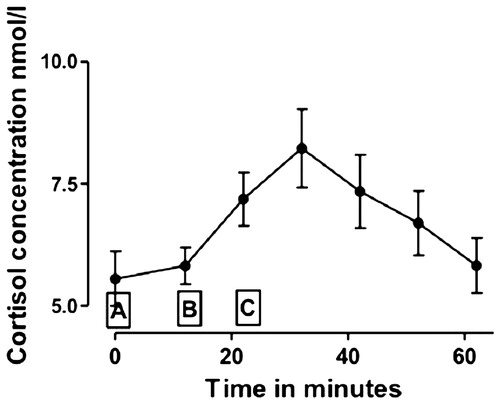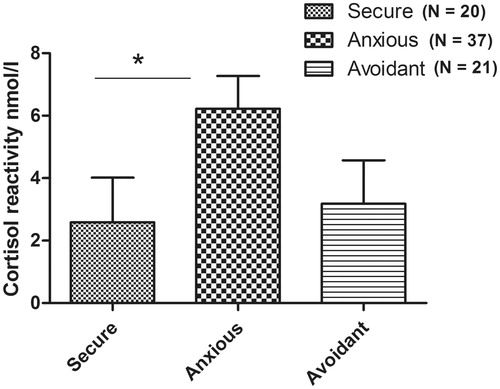Figures & data
Figure 1. Mean (±SEM) salivary free cortisol concentrations (nanomoles per litre) for all participants (n = 78). (A) Immediately before onset of the TSST-G; (B) mid-way through the TSST-G and (C) immediately after the end of the TSST-G.


